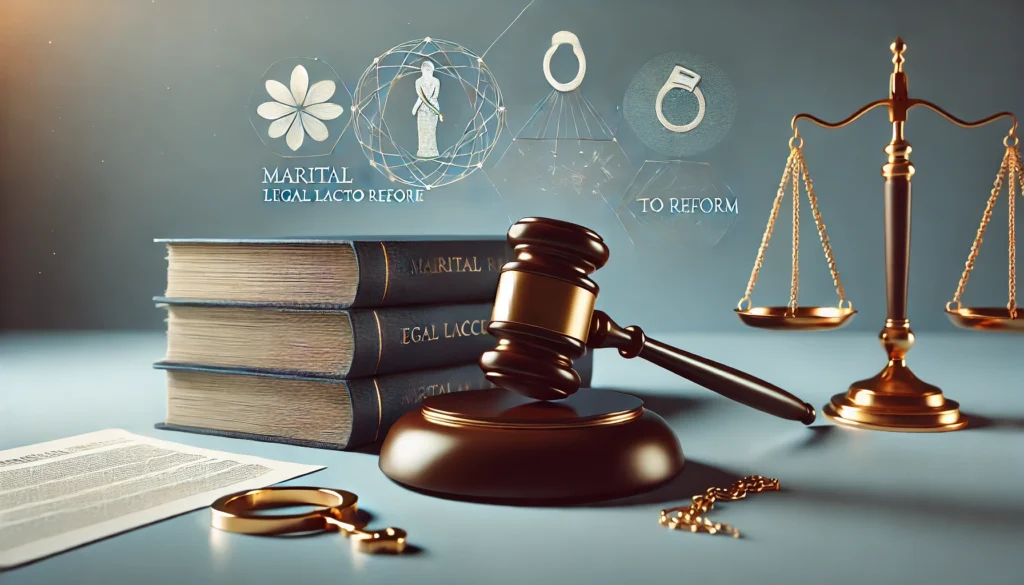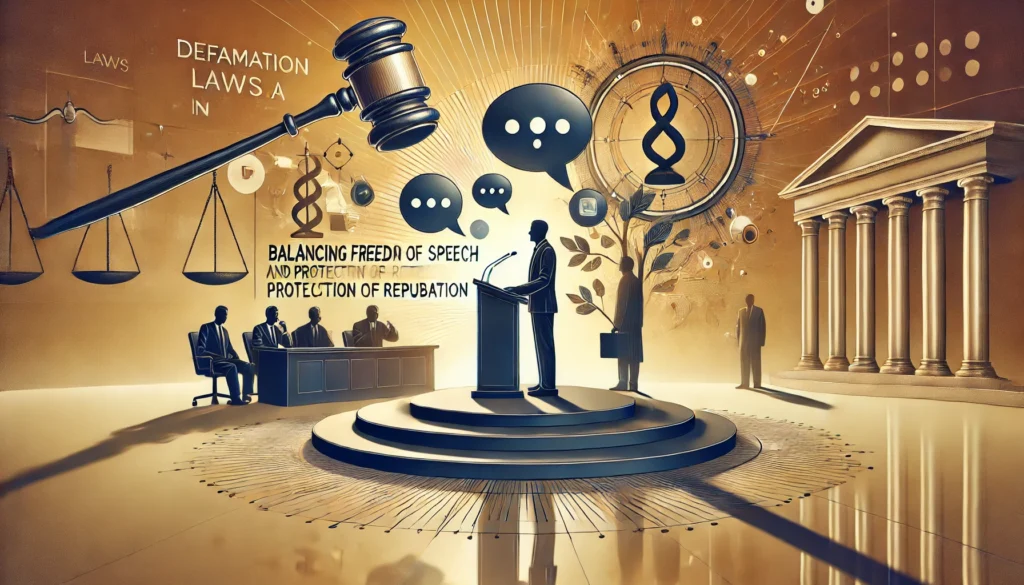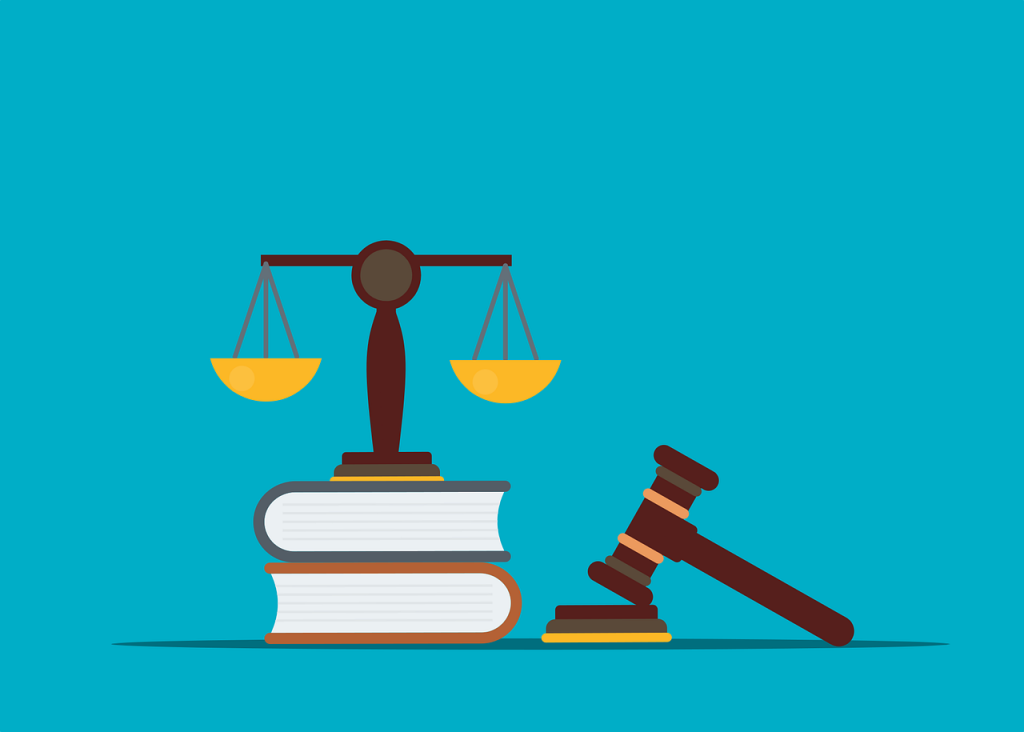Published on 26th July 2025
Authored By: Shreyas Rastogi
ICFAI University Dehradun
Abstract
Imagine being accused or wronged, only to wait years for a courtroom decision that could restore your life, reputation, or peace of mind. What if, by the time justice arrives, its value is already lost? The saying ‘justice delayed is justice denied’ reflects a harsh reality[1] where delays don’t just slow down the system—they strip justice of its meaning, leaving victims and accused alike to wonder: when justice comes too late, is it justice at all?
KEYWORDS: fairness, postponement, reliance, administration, legal system, promptness, arbitration.
Introduction
“Justice delayed is justice denied.” William E. Gladstone, declares louder today than ever. However, this truth has been echoed through centuries, not just by gladstone. Throughout different periods and societies, a universal truth persists: when justice is delayed, it begins to feel like injustice.
For individuals involved in prolonged legal disputes, the ordeal can be extremely distressing[2]. The additional suffering they endure is worsened by the lengthy and tedious process of legal proceedings. Recent studies have confirmed what we already knew: time is of the essence. In fact, it is often the most significant factor in determining whether individuals perceive they have been treated justly within the legal system.
This is not just a concern for significant legal disputes. Justice today encompasses a much wider range of options — from alternative dispute resolution (adr) and external dispute resolution (EDR) to the everyday conflicts we aim to resolve without entering a courtroom. Even here, delays continue. The longer it takes to settle a disagreement, the more probable it is that individuals will become disenchanted with the resolution process[3].
There are reasons to remain hopeful because in the end, justice that arrives too late is not justice at all. The longer we allow delays, the greater the chance of losing public confidence in the fairness and integrity of the justice system[4].
Justice at a Standstill
The Everyday Struggle for Fairness in India’s Courts For millions of Indians, justice is not just delayed — it is often unattainable. Behind every pending case lies a personal narrative: a family in search of resolution, an individual awaiting exoneration, a survivor longing for respect. The statistics indicate a flawed system that is failing to meet the needs of its citizens:
- As of January 31, 2025, the supreme court had 82,445 pending cases, a net increase of 2,637 cases compared to January 2024—despite resuming regular hearings[5].
- In 2024, district courts handled a staggering 13.4 million cases, surpassing the previous year’s record of 10.5 million fresh filings—a remarkable turnaround from just 3.1 million disposals in 2023[6].
- More than 62,000 cases in high courts are older than 30 years, with 2.45 lakh cases falling within the age range of 20-30 years, indicating a persistent and ingrained problem within the legal system[7].
- As of late 2024, approximately 4.34 million prisoners, accounting for 75.8% of the total prison population, are still serving their sentences, with over 8.6% of them being held for more than three years[8].
- India currently has a significantly lower number of judges per million people compared to the benchmark of 210 per million in Europe. The number of fast-track court cases is being reduced because there is a lack of judges available[9].
“Justice delayed is justice denied”- a maxim that highlights a profound injustice: when someone wronged is left waiting indefinitely for a legal remedy, it feels as though justice is out of reach entirely. This principle lies at the heart of the right to a speedy trial[10], designed to prevent harm from lingering unresolved. Yet, in a system often tangled by complexity, delays, or political indifference, the phrase has become a rallying cry, urging reforms that can make timely justice not just a right, but a reality.
When Time Stood Still: India’s Most Famous Cases of Delayed Justice
Nirbhaya Case (2012–2020)
The brutal gang rape and murder of a young woman in Delhi sparked nationwide outrage and protests against sexual violence and impunity.
The brutal gangrape and murder of a young paramedical student in Delhi in December 2012 sparked an unprecedented surge of public outrage and calls for justice. The government set up a speedy court, and the accused were given the death penalty within nine months. Unfortunately, the family had to endure an agonizing eight-year wait, filled with repeated appeals, review petitions, and heartfelt pleas for mercy. For Nirbhaya’s parents, every delay felt like reopening a painful wound. The convicts were finally put to death in March 2020 — but the lengthy legal battle exhausted the family and revealed how even high-profile cases can be hindered by procedural delays. The outcome was just, but it took a long time to achieve[11].
Babri Masjid Demolition Case (1992–2020)
On December 6, 1992, the destruction of the 16th-century Babri Masjid in Ayodhya led to communal riots that resulted in the loss of thousands of lives. The legal proceedings against 49 individuals, including prominent politicians, lasted for 28 years. Years of procedural delays and political interference caused the trial to be postponed repeatedly. Finally, in 2020, a special court acquitted all the accused due to a lack of evidence, leaving many questioning whether justice had ever been truly served. For the individuals affected by the riots, and for the entire country, this was a clear example where the delay in seeking justice resulted in the denial of justice[12].
Uphaar Cinema Fire Case (1997–2023)
In 1997, a devastating fire broke out at the Uphaar cinema in Delhi, resulting in the loss of 59 lives and injuring over 100 individuals. The tragedy was worsened by the difficulty faced by the families of the victims in seeking justice against the cinema owners. The case persisted for 26 years, with the brothers being found guilty, fined, and making multiple appeals. In 2023, the supreme court mandated them to pay ₹60 crore as compensation. Unfortunately, for the families of the victims, who had to endure a long and arduous legal battle under the Association of Victims of the Uphaar Tragedy (AVUT), the prolonged delay resulted in justice becoming meaningless as time went on[13].
Bhopal Gas Tragedy Case (1984)
The 1984 gas leak from the union carbide plant in bhopal resulted in the loss of thousands of lives and left tens of thousands of people in a state of suffering. The legal battles waged against the accused and the ongoing struggle for fair compensation and proper medical treatment have spanned four decades. In 2010, a lower court found eight Indian officials guilty of minor offenses, with sentences that held symbolic significance. Even today, survivors persist in their fight for environmental remediation and fair compensation. The injustice’s intergenerational aspect, where the victims’ children continue to suffer from health problems, stands as a glaring illustration of justice denied due to prolonged delays[14].
Systemic Barriers to Timely Justice
A Thinning Bench
India has only 21 judges per million people, compared to the global average of 50, which is insufficient for a population of over 1.4 billion. As of early 2025, nearly 400 high court positions remain vacant, and lower courts also face staff shortages. The lack of courtrooms and long case lists lead to delays embedded in the system from the outset[15].
The Maze of Procedures
Cases often fall into a cycle of adjournments, outdated laws, and procedural delays. The British-era Code of Civil Procedure still dominates, often manipulated by powerful litigants to stall proceedings, leaving even the gravest cases entangled in complexity[16].
Digital Divide in Courtrooms
E-courts offer potential, but digital reforms are hampered by uneven infrastructure. Urban areas advance, but rural courts struggle. Judges unfamiliar with digital systems find the shift to paperless processes more obstructive than helpful[17].
Underutilisation of ADR
Alternative Dispute Resolution (ADR) — including mediation, arbitration, and conciliation — offers quicker solutions but remains under prioritized. Courts rarely recommend it, and public awareness is low, causing avoidable cases to further burden the judiciary[18].
The Wider Impact of Delayed Justice
Faith in Justice Frays
Each year a case remains unresolved, public trust in the legal system erodes. For disadvantaged individuals, ongoing hearings and absent verdicts foster a deep sense of disconnection from justice[19].
Victims Re-traumatised
Delays force victims to repeatedly relive their trauma. Each adjournment extends their pain, leading many — especially in cases of sexual assault or communal violence — to abandon the legal process altogether[20].
Deepening Inequality
Time equals wealth. The rich prolong cases with expensive lawyers, while the poor often drop theirs due to mounting costs. This imbalance makes already delayed justice even more
unjust[21].
An Economic Drag
Delays also harm the economy. Enforcing a contract in India takes over 1,400 days, according to the World Bank — discouraging foreign investment and harming India’s ease-of-doing-business rankings[22].
Political Impunity
Delays in cases of riots or corruption weaken accountability. When trials involving the powerful stretch for decades, justice is effectively denied, eroding democracy and letting the guilty go unpunished[23].
Breaking the Chains of Delay: Fresh Pathways Toward Timely Justice
India’s justice system faces chronic delays, and while increasing judges and courtrooms is important, it isn’t enough. A transformative approach — embracing technology, strengthening infrastructure, and promoting alternative mechanisms — is essential to ensure timely, accessible, and fair justice. Encouragingly, several initiatives mark a shift in this direction.
- Pre-Litigation Mediation: Solving Disputes Before They Become Cases
The Mediation Act, 2023 introduced mandatory pre-litigation mediation for most civil and commercial disputes, setting a 120-day limit (extendable once)[24]. Since over 70% of such cases don’t require a full trial, this reform fosters open communication and reduces judicial backlog. It empowers parties, lowers legal costs, and spares them emotional strain. Courts, freed from avoidable litigation, can focus on urgent and complex matters, increasing overall efficiency[25].
- AI-Powered Tools: Smart Justice, Not Just Fast Justice
AI tools like SUPACE help Supreme Court judges review documents, while trial courts use AI for case scheduling. Automating routine tasks enables judges to focus on key decisions, speeding up the justice process without compromising quality[26].
- Blockchain: Securing Evidence for a Fairer Trial
In criminal trials that often span years, the tampering or loss of evidence remains a major concern. Blockchain technology can revolutionize evidence preservation by ensuring a tamper-proof chain of custody. Digital records — such as CCTV footage, emails, or e-contracts — can be time-stamped and securely stored. This is especially vital in high-profile or politically sensitive cases, reinforcing transparency, accountability, and public confidence in the judiciary[27].
- National Judicial Infrastructure: Building for the Future
The push for a National Judicial Infrastructure Authority (NJIA) highlights the need for uniform quality in court infrastructure. Many rural courts lack basic facilities, and upgrading them is essential to ensure equal access to justice nationwide[28].
- Online Dispute Resolution: The Court in Your Pocket
ODR platforms like Sama enable resolution of small disputes — loans, insurance, consumer issues — within 45 days, entirely online. It decentralizes access to justice, offering quick, low-cost solutions to people across cities and towns alike[29].
Conclusion
The warning that “justice delayed is justice denied” is becoming an uncomfortable truth in today’s India. From tragic events like the Uphaar Fire[30] and Bhopal Gas Tragedy[31] to the silent struggles of millions awaiting trial, the slow pace of justice erodes trust and widens the gap between law and fairness. The data is striking, the human toll immense. Yet, there is reason for optimism. Reforms such as the Mediation Act, AI integration, blockchain-based evidence systems, real-time tracking tools like Twarit, and growing use of Online Dispute Resolution signal a justice system on the brink of transformation. Initiatives like Nyaybandhu and e-Seva Kendras remind us that justice must reach even the most marginalized. However, technology alone cannot fix a broken system. True reform requires strong political will, increased funding, and urgent procedural changes. Justice must be prompt, accessible, and fair — not only for the privileged, but for all.
If we fail to act, we risk not just delaying justice — but destroying public faith in its very existence.
References
[1] Hussainara Khatoon (I) v Home Secretary, State of Bihar AIR 1979 SC 1360
[2] Law Commission of India, Arrears and Backlog (Report No 245, 2014)
[3] Law Commission of India, Arrears and Backlog: Creating Additional Judicial (wo)manpower (Report No 245, 2014)
[4] Nitya Ramakrishnan, ‘Delayed Justice and Human Rights’ (2014) 5(2) NUJS L Rev 153
[5] Supreme Court of India, Monthly Statistics Report: January 2025 accessed 10 June 2025
[6] National Judicial Data Grid (NJDG), District Court Dashboard https://njdg.ecourts.gov.in/districtcourt accessed 10 June 2025
[7] National Judicial Data Grid (NJDG), High Court Statistics (Age-wise Pendency) https://njdg.ecourts.gov.in/highcourt accessed 10 June 2025
[8] National Crime Records Bureau (NCRB), Prison Statistics India 2024 accessed 10 June 2025
[9] Vidhi Centre for Legal Policy, India Justice Report 2023 https://www.indiajusticereport.org accessed 10 June 2025
[10] Human Rights Act 1998, sch 1, art 6(1)
[11] Mukesh v State (NCT of Delhi) (2017) 6 SCC 1 [245] refers to a paragraph you may want to cite — for example, on the court’s observation on “rarest of rare” doctrine.
[12] Kalyan Singh v State of UP (1997) 3 SCC 214 This case relates to the prosecution of public officials and framing of charges in connection with the Babri demolition.
[13] CBI v Sushil Ansal (2015) 11 SCC 657
[14] Union Carbide Corporation v Union of India (1989) 2 SCC 540
[15] Law Commission of India, Manpower Planning in Judiciary: A Blueprint (Report No 245, 2014)
[16] Law Commission of India, Delay and Arrears in Trial Courts (Report No 77, 1978)
[17] Vidhi Centre for Legal Policy, Justice Access and Technology: Bridging the Digital Divide (2023) https://vidhilegalpolicy.in accessed 11 June 2025
[18] Law Commission of India, Need for Justice-dispensation through ADR and Mediation (Report No 222, 2009)
[19] Nitya Ramakrishnan, ‘Delayed Justice and Human Rights’ (2014) 5(2) NUJS L Rev 153
[20] National Law School of India University (NLSIU), Re-traumatisation in Judicial Process: A
Victim-Centric Study (Research Brief, 2022)
[21] Law Commission of India, Cost of Litigation and Access to Justice (Report No 230, 2009)
[22] World Bank, Doing Business 2020: Comparing Business Regulation in 190 Economies (World Bank
Group 2020) https://www.doingbusiness.org accessed 11 June 2025
[23] Law Commission of India, Trial of Offences Relating to Transactions in Securities and for Certain Other Offences (Report No 219, 2008)
[24] Mediation Act 2023, s 5(1), s 20
[25] Law Commission of India, Need for Justice-dispensation through ADR and Mediation (Report No 222, 2009)
[26] Niti Aayog, Responsible AI for Social Empowerment (RAISE) Report (2020)
[27] Niti Aayog, Blockchain: The India Strategy — Part 1 (2020) https://niti.gov.in accessed 11 June 2025
[28] Supreme Court of India, Speech by the Chief Justice on Judicial Infrastructure (2021) https://main.sci.gov.in accessed 11 June 2025
[29] Niti Aayog, Designing the Future of Dispute Resolution: The ODR Policy Plan for India (2021) https://niti.gov.in accessed 11 June 2025
[30] CBI v Sushil Ansal (2015) 11 SCC 657
[31] Union Carbide Corporation v Union of India (1989) 2 SCC 540




